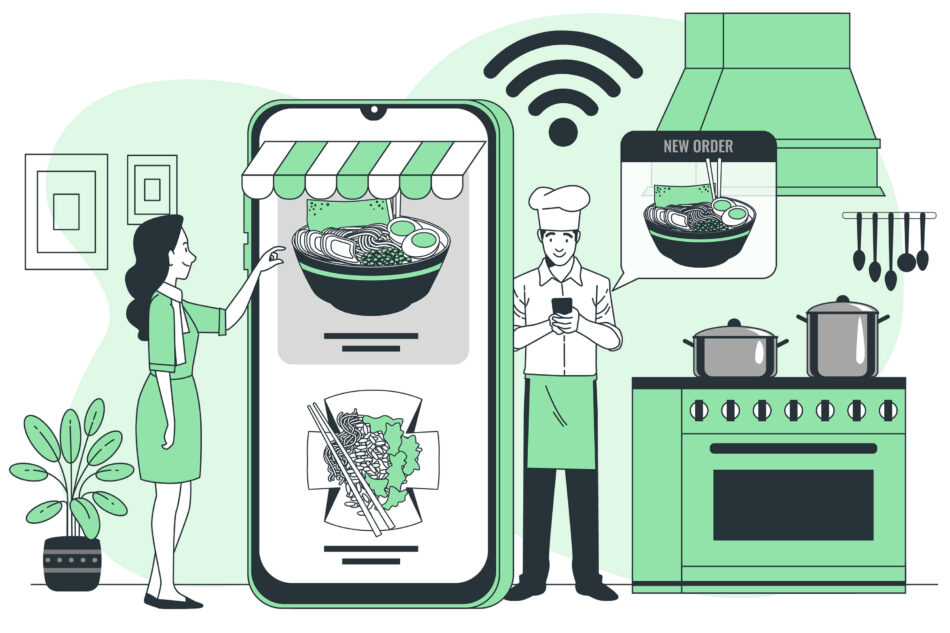Introduction
AI in the restaurant industry is no longer just a futuristic concept—it’s the reality shaping how modern dining businesses operate. From intelligent order-taking and kitchen automation to predictive inventory and personalized guest interactions, AI is revolutionizing restaurant workflows.
As restaurants face rising operational costs and high customer expectations, AI automation provides a competitive advantage. This article explores how AI is being used to streamline processes, cut down expenses, and enhance customer satisfaction, while also discussing how tools like AI chatbot app development services are enabling personalized service at scale.
1. The Rise of AI in the Restaurant Industry
In 2025, restaurants must balance cost-efficiency with top-tier guest experiences. Traditional operations alone can’t keep up with labor shortages, inconsistent service, or real-time customer demands. AI steps in by automating repetitive processes, improving decision-making, and allowing restaurants to deliver fast, consistent, and customized experiences.
Whether it’s fast-food chains or fine-dining establishments, AI in the restaurant industry is becoming foundational to operations.
2. Automating Front-of-House Interactions
One of the most common use cases of AI is in the front-of-house environment. AI-powered kiosks and mobile apps allow guests to place their orders with precision and zero wait time. These systems often use natural language processing (NLP) and data from past orders to suggest upsells or customize experiences.
Restaurants that invest in AI chatbot app development services are now offering 24/7 support via websites, mobile apps, and social media channels. These bots handle reservations, provide menu recommendations, and answer questions—drastically reducing the load on customer-facing staff.
3. Streamlining Kitchen Operations with Smart Automation
The kitchen is where the cost-saving power of AI becomes most visible. AI-enabled kitchen systems can predict peak times and automatically adjust workflows. For example, prep stations can be optimized based on expected demand, and robotic arms can handle repetitive tasks such as flipping burgers or slicing vegetables with minimal human intervention.
These innovations reduce food prep time, maintain consistency, and limit food wastage—all of which directly cut costs and improve guest satisfaction through faster service and standardized quality.
4. Inventory and Supply Chain Optimization
AI systems analyze past sales trends, seasonality, and vendor performance to automatically place restocking orders. This predictive inventory system helps restaurants avoid over-ordering, minimize waste, and ensure they never run out of high-demand items.
Restaurants using AI for supply chain planning are also able to track real-time consumption and expiry data, resulting in better cost control and fresher offerings for guests.
5. Personalized Guest Engagement Through AI Chatbots
When powered by custom AI chatbot app development services, restaurants can deliver hyper-personalized experiences at scale. AI bots learn from customer preferences, order history, and behavior to offer recommendations, loyalty rewards, and promotions.
This level of personalization boosts customer satisfaction and drives repeat business, while also reducing the need for manual marketing outreach.
6. Labor Cost Reduction and Staff Allocation
AI does not replace humans—it empowers them. In the restaurant industry, where margins are tight and labor shortages are common, AI helps reallocate human resources to more meaningful tasks.
For example, while chatbots manage guest inquiries, human staff can focus on enhancing in-person service. AI also assists in staff scheduling based on predicted demand, which optimizes shift planning and reduces overtime.
7. Real-Time Feedback and Sentiment Analysis
AI can be used to automatically request, collect, and analyze guest feedback after each meal. Sentiment analysis tools categorize reviews and flag negative experiences instantly, allowing managers to resolve issues before they escalate.
With this real-time loop, restaurants not only protect their reputation but also gain insights that drive menu optimization and staff training.
8. Enhanced Delivery and Takeout Experience
AI algorithms now power logistics systems that determine the fastest delivery routes, best delivery windows, and even forecast which items are likely to be ordered in certain time slots. This results in faster delivery, fewer errors, and higher customer satisfaction.
Integration with food delivery platforms, combined with a smart chatbot interface, ensures guests can track their orders in real time.
9. Predictive Analytics for Menu Engineering
With AI, restaurants can determine which dishes generate the highest profit margin, which meals underperform, and which combinations lead to more upsells. AI tools offer recommendations for pricing, removing low performers, or bundling offers based on consumption trends.
This level of insight allows restaurants to craft a more profitable and appealing menu—something manual analysis rarely achieves with the same accuracy.
10. Voice Assistants and Smart Ordering
The rise of voice commerce in restaurants is another form of automation gaining traction. Voice-enabled kiosks or in-app assistants allow customers to place orders, repeat previous meals, or modify ingredients with a simple command.
Backed by AI chatbot app development services, these voice interfaces also support accessibility needs, making the restaurant experience more inclusive.
Conclusion
AI in the restaurant industry is driving a new era of cost-efficient, guest-centric operations. Through automation in ordering, kitchen management, customer support, and marketing, AI helps restaurants reduce costs while simultaneously improving the overall dining experience.
For restaurant owners aiming to stay competitive, adopting AI tools and investing in services like AI chatbot app development services is no longer optional—it’s essential. As the industry evolves, the restaurants that embrace AI-first operations will lead in profitability, scalability, and customer loyalty.
 WhatsApp Us Now
WhatsApp Us Now









